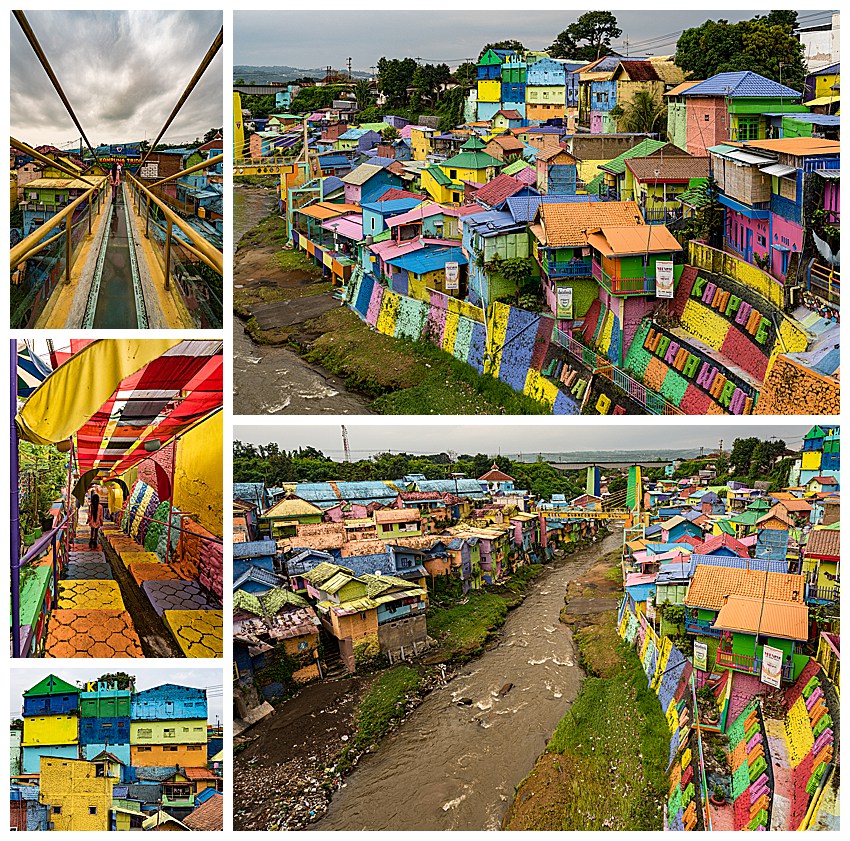
We next flew to Java, for a week to explore that portion of Indonesia. Our first stop in Java was Malang, located in the highlands of East Java with a population of 844,000 people. It was formerly a Dutch colony prized for its mild weather, and thus much of the architecture has Dutch influence.
At the edge of the city of Malang, in the poorer part of town, is Kampung Warna-Warni, Indonesian for “Village of Color”. This funky local village was a redevelopment project co-created by the government and university students in 2016. With the use of bright paint donated by a paint company, this village has turned into a tourist destination and become economically viable. The people still live and work there, but the tourists are starting to come to see the beautifully painted murals created by the local artists. The facades are all painted with bright colors. Even the bridge (upper-left) and stairs (middle-left) have been decorated.
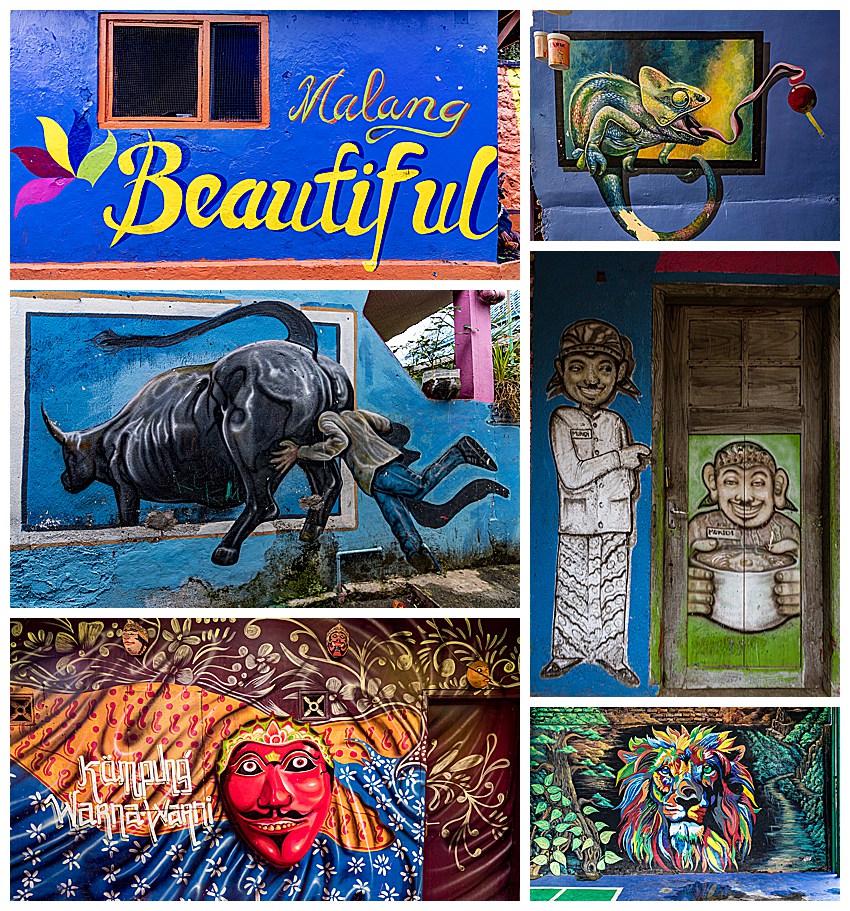
Every turn of a corner reveals a new mural, often whimsical, as the man with his head stuck up the rear of a bull (center-left). Others are graphically dramatic (lower-right), while many of the others are simply artists’ dreams, given free reign in the neighborhood.
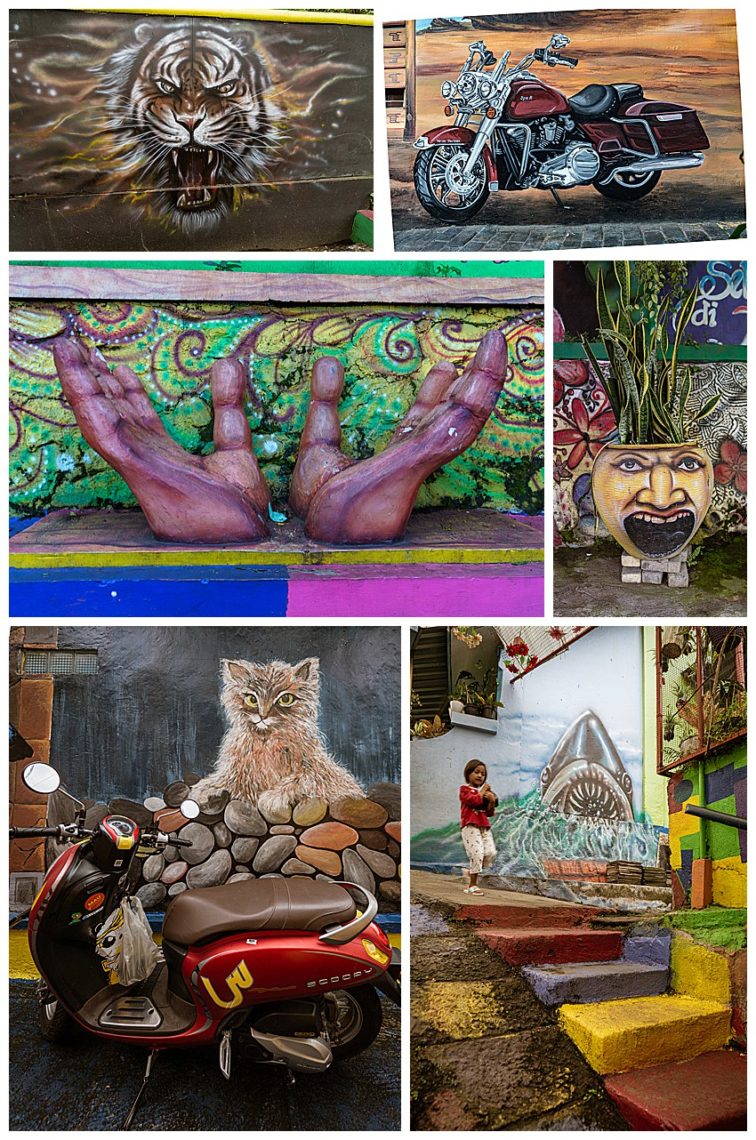
It’s a lot of fun to walk around this village, and the people are friendly and photogenic. There are actually two villages, one on each side of the river which you can cross over the colorful bridge. Our favorite murals were located on the Kampung Warna-Warni side, seen here.
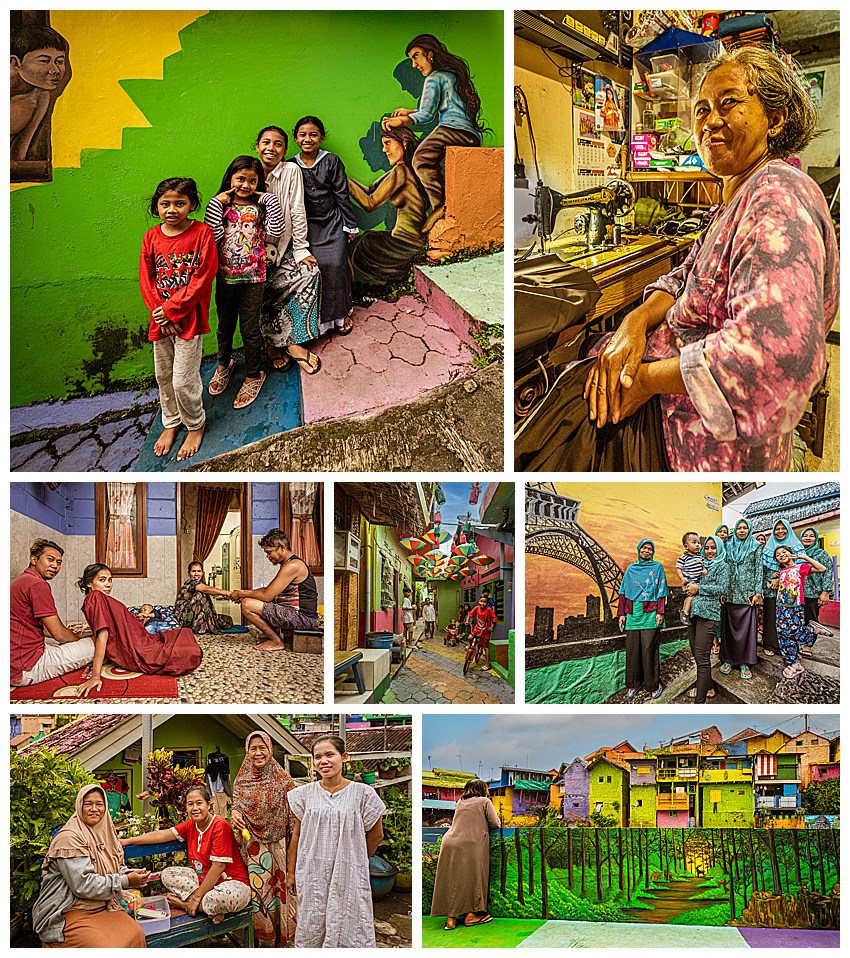
Bright colors and murals are a draw to tourists, both from Indonesia and the rest of the world, and this pilot project has inspired other communities to copy their model. They revel in that distinction, and are happy to spend a few moments with visitors and their cameras. Kids are always a favorite subject of ours (upper-left and middle), but professionals at work (upper-right) and entire families also welcomed us, and appeared happy that we did not just “shoot and run.”
The demographics here are quite different than Bali. Java is predominantly muslim, and you can hear the call to prayer from the many mosques in every neighborhood, while Bali is mostly Hindu.
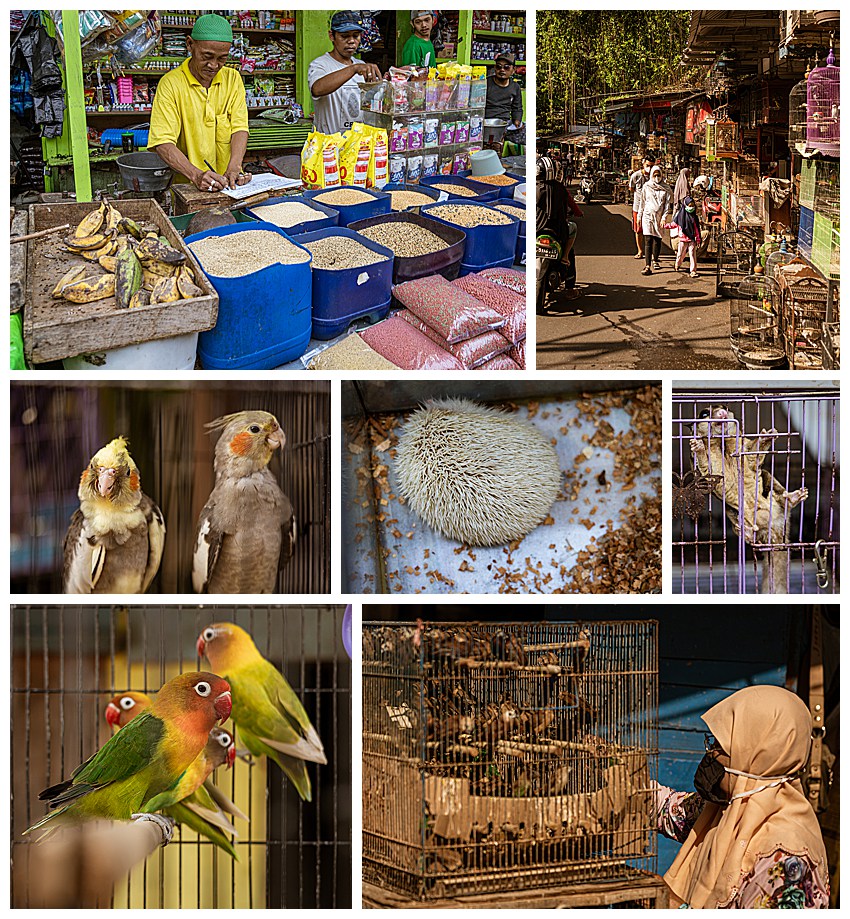
There is a saying in Java: “A man is considered to be a real man if he has a house, a wife, a horse, a dagger and a bird.” Birds are the most popular pet in Indonesia, sought as living objects d’art, good luck charms or, in the case of rare species, status symbols.
Around the corner from our hotel, the historic Hotel Tugu, is one of the larger bird markets in Indonesia. This is a typical Asian pet market, where live animals are sold. Birds dominate the market, which is lined with hundreds of bird cages along the street (upper-right) and pet food (upper-left). Standard pet birds such as cockatiels (middle-left) and love birds (lower-left) are available for purchase, as are more exotic varieties. There are also several vendors selling non-avian animals though, such as rabbits, porcupines (center) and even flying squirrels from Borneo (middle-right).
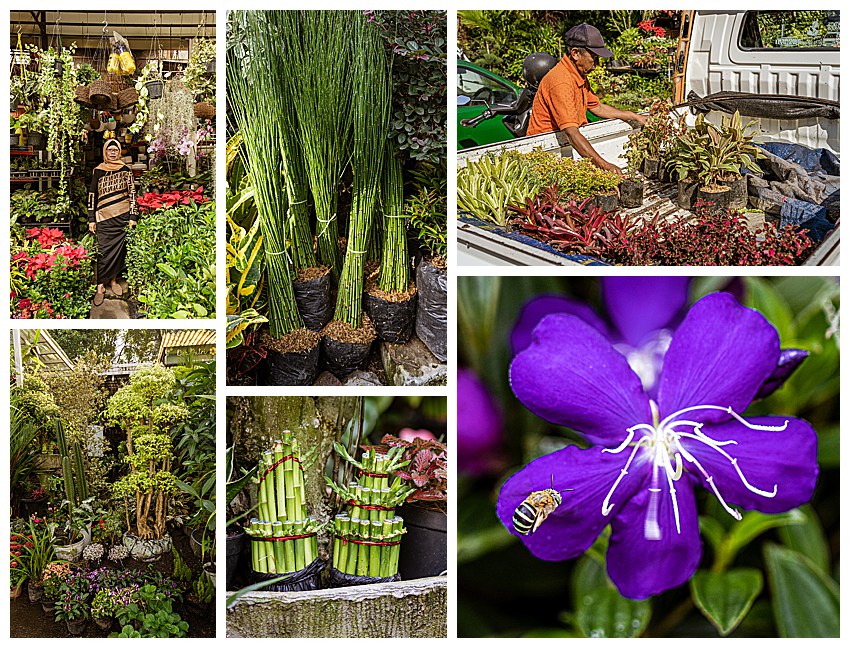
Just around the corner from the bird market is a flower market. Many of the flowers found here would be found in any similar sized flower market in the US. However, there are also some specialty plants from this part of the world, such as the short narrow bamboo often used as decorative fences (center), or the Bonsai bamboo (bottom-center).
Though pollinating bees are dying out around the world, one bee was seen busy doing his part (lower-right).
